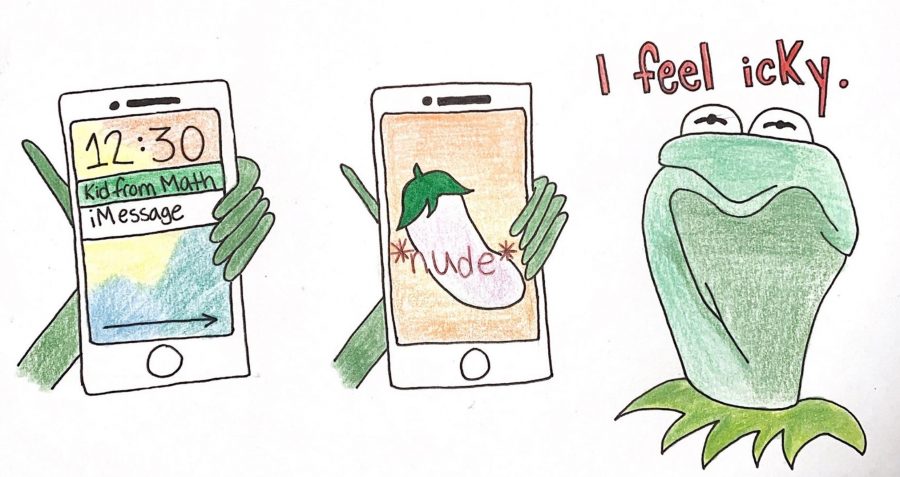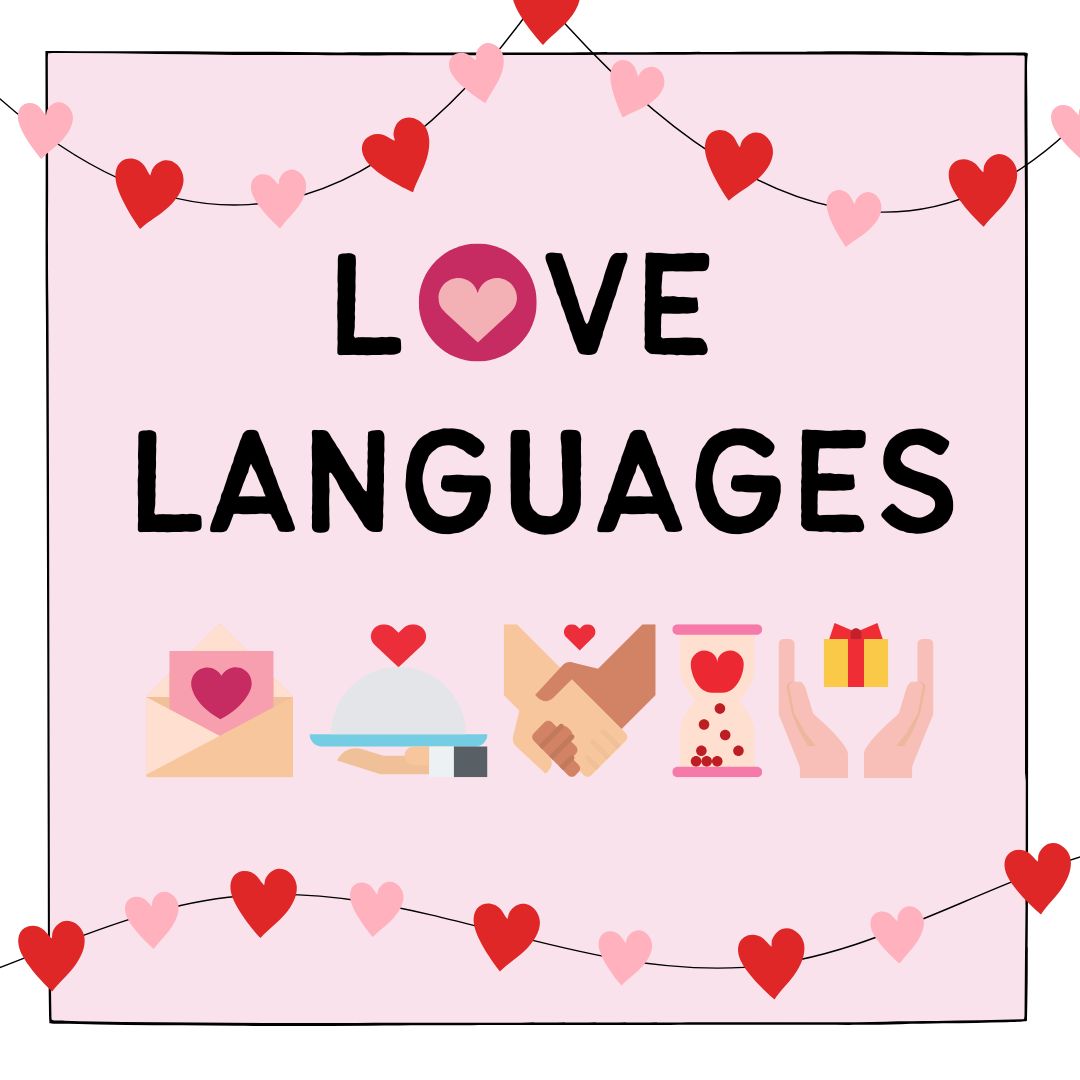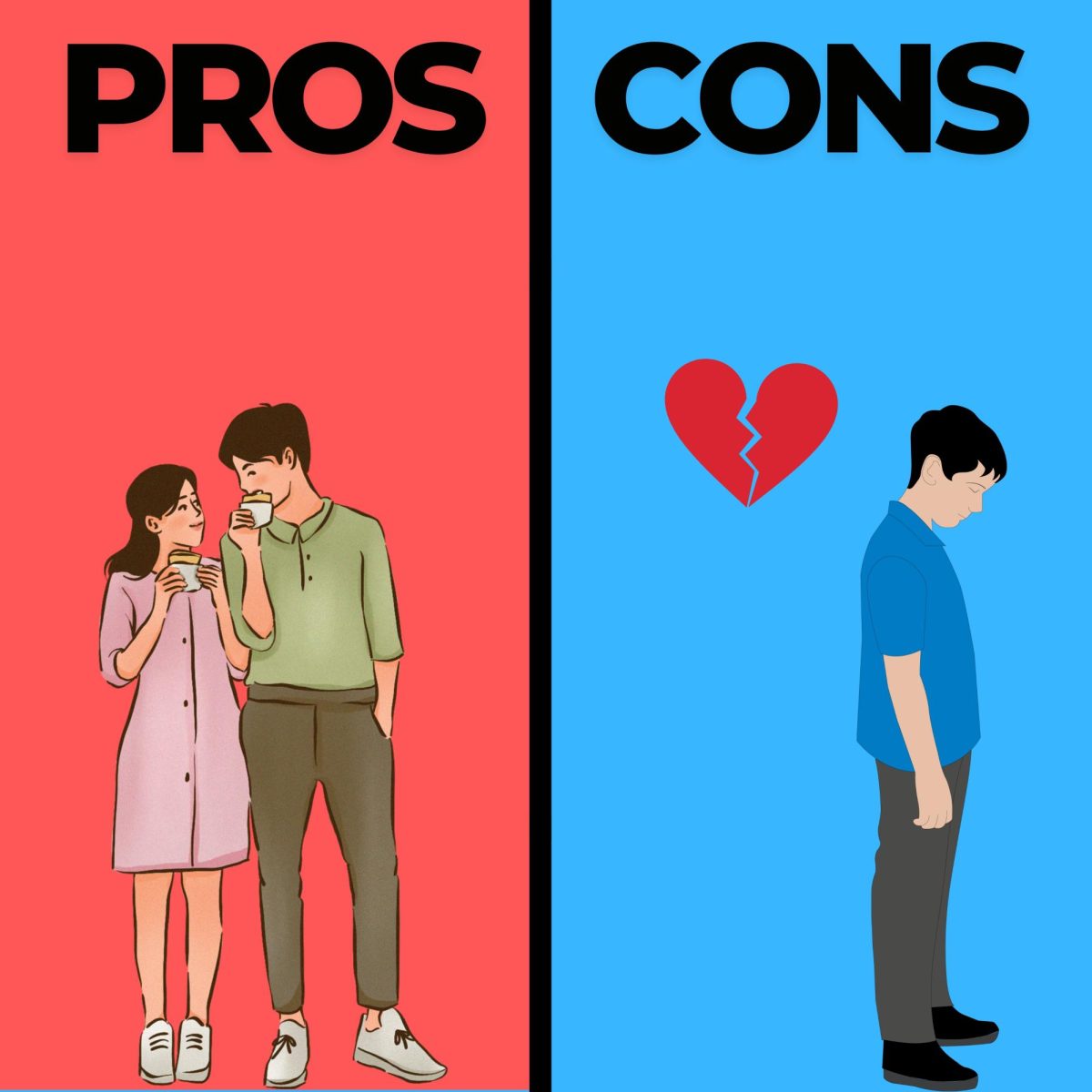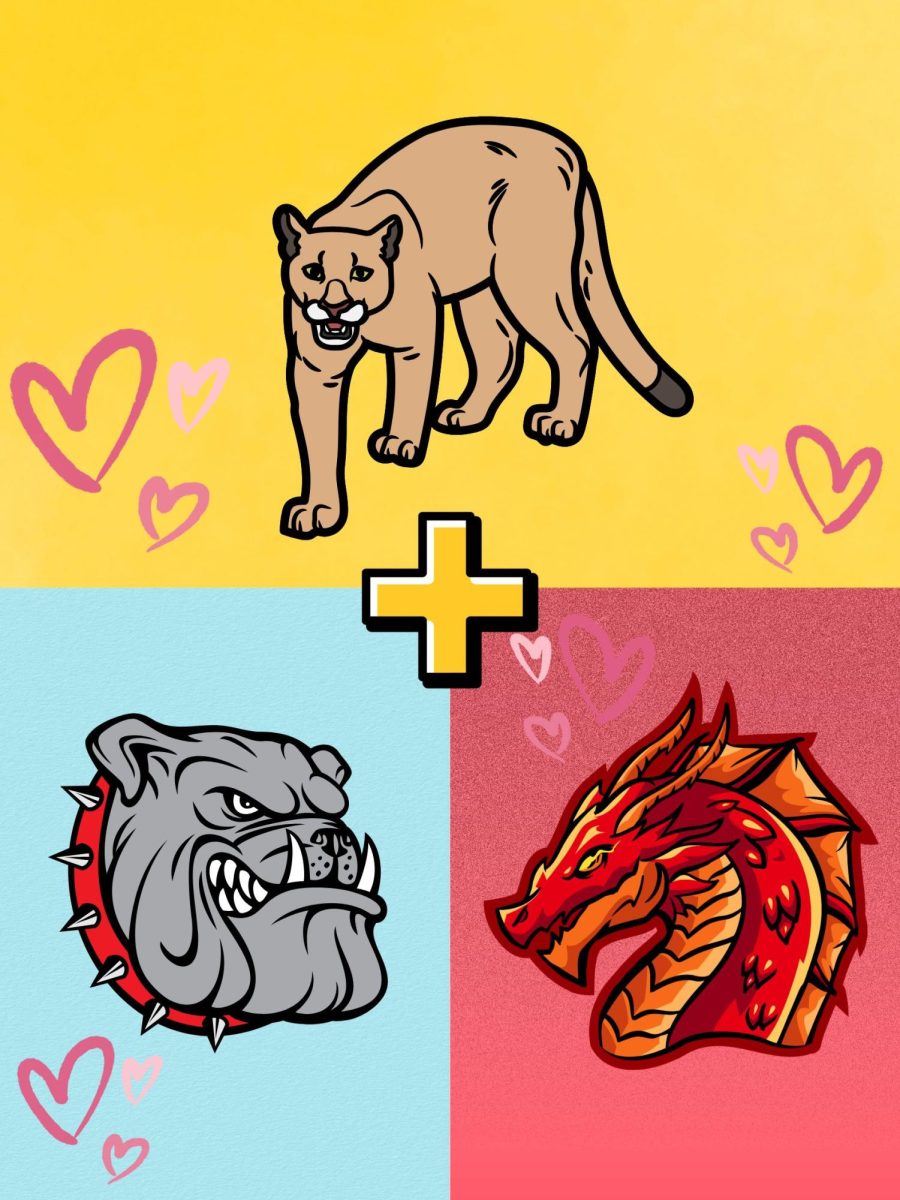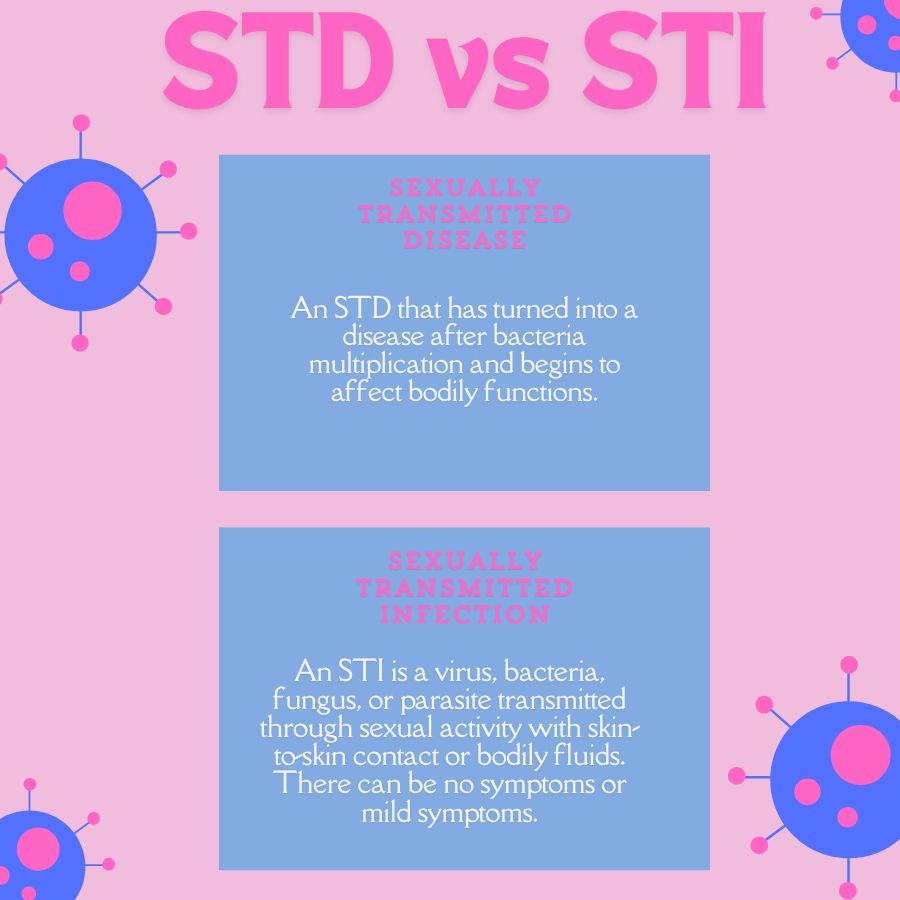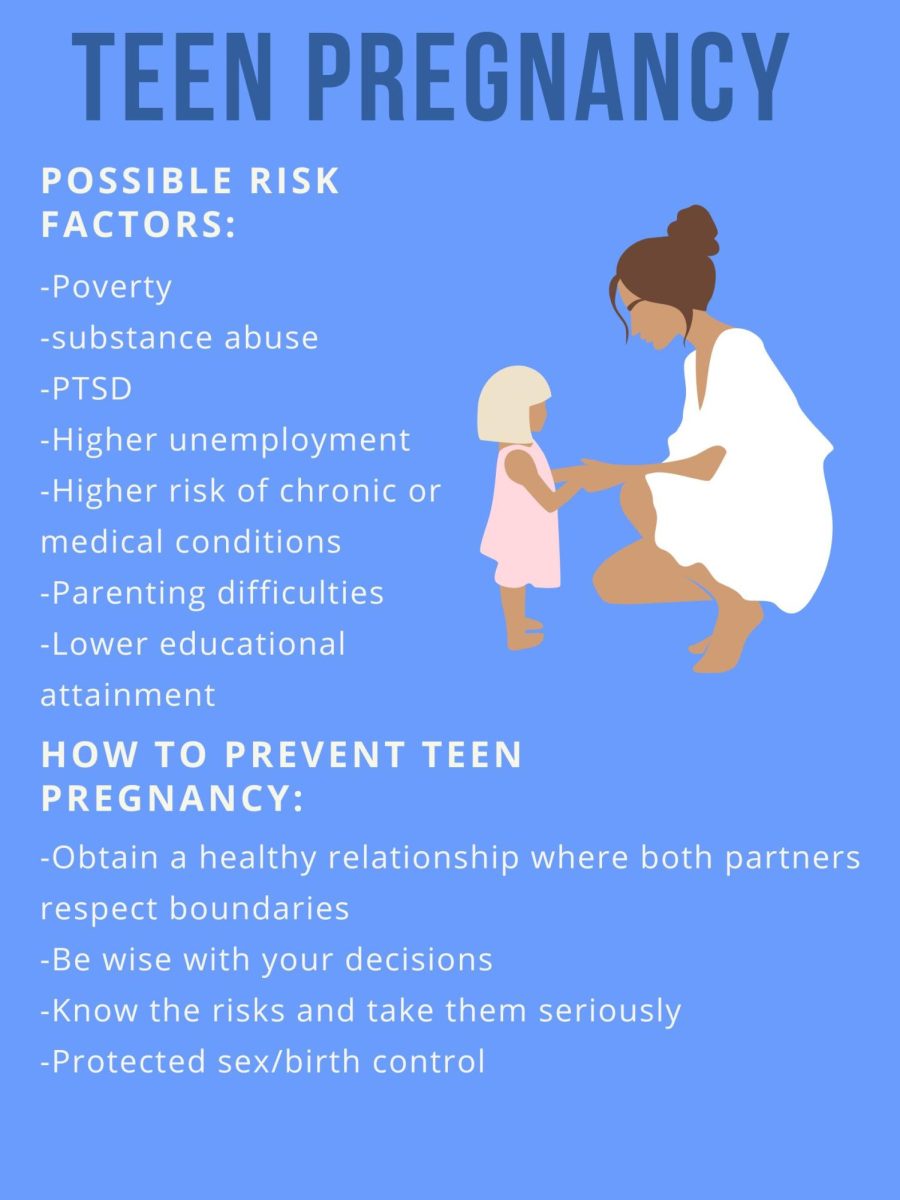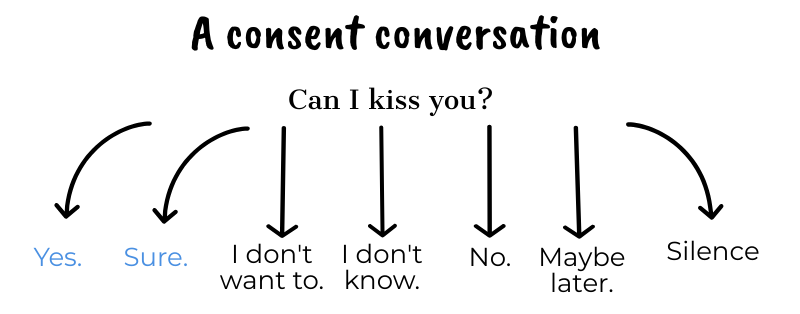Many VHS students have received unsolicited nude photos and repercussions for the senders could be severe.
It is common knowledge that sending sexually explicit photos of minors is illegal, however, out of 768 Ventura High School students, 28% claim to have sent sexually explicit photos or videos to someone else.
Sending nudes is typically meant to be a consensual act of intimacy among two people and is generally considered harmless. Nonetheless, the aforementioned statistic does not account for the number of nude photos that have been sent without the consent of the receiver.
Out of 354 VHS females, 62 percent claim to have received unsolicited sexual photos, and 50.6 percent out of 401 VHS males claim the same. Whether the sender acted intentionally or accidentally, it is difficult to justify the unsolicited sending of obscene photos. Senior Kayla Swain commented, “I definitely think [sending unsolicited nudes] is harassment and so does the law. It’s gross, don’t make sexual advances if it’s unwanted.”
Unlike other states, California does not have laws enacted when it comes to the consensual sharing of nude photos or videos between two adults. The law only comes into play when sexually explicit content is shared between a minor and a legal adult or when there is an issue of “revenge porn” in which an individual’s nudes are consensually sent to one person who then shares said photos with others.
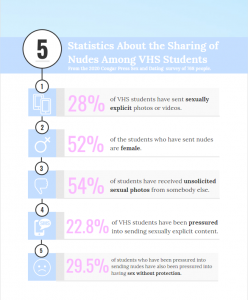
That being said, California is currently attempting to pass the “Unsolicited Lewd Images” bill that would make the sending of unwanted sexual content illegal. The bill, which was amended by the Senate on Feb. 20 of 2020, states, “This bill… would establish a private cause of action against a person who knowingly transmits or shares a lewd image by electronic means if the transmission or sending of that image was not at the request of, or expressly consented to by, the plaintiff and the plaintiff can demonstrate that the image they received was lewd, there was clear intent by the defendant that the plaintiff receive the image, and that there was no, or only a limited, relationship between the plaintiff and the defendant.”
The issue of “clear intent” is important because in many cases of unsolicited nudes being sent, the sender often claims to have done so by accident. However, only 6 percent of VHS students claim that they accidentally received unsolicited nudes, while 76 percent claim that they were sent intentionally. This begs the question, how likely is it for one to accidentally send an obscene photo? Is this common or is it simply used as a cover-up?
Senior, Laura Kemble, stated, “I think it depends on the person, how many people they talk to on a regular basis, how much they care about others seeing their body. I feel that it could be accidental, but it’s not very likely.” On the other hand, junior Haley Sabo believes that it could be likely for such a thing to happen, she noted, “There have been so many times where I’ve accidentally sent a text or Snapchat to someone, so I think it’s really common for that to happen with nudes as well.”
It is true that technology is very unforgiving when it comes to accidental button pushing, thus making the likelihood of accidentally sending content as compromising as a nude photo much higher. When it comes to the issue of unwanted sexual content, the instances of accidental sharing are not the problem, but rather, as Sabo stated, “The main issue is when people don’t understand that it’s wrong and keep on doing it.”
If California’s proposed “Unsolicited Lewd Images Bill” becomes a law, it will incentivize more people to refrain from “online flashing” as the repercussions of doing so could be between $500 and $5000 with additional attorney fees, not to mention a reputation as a sexual harasser.




